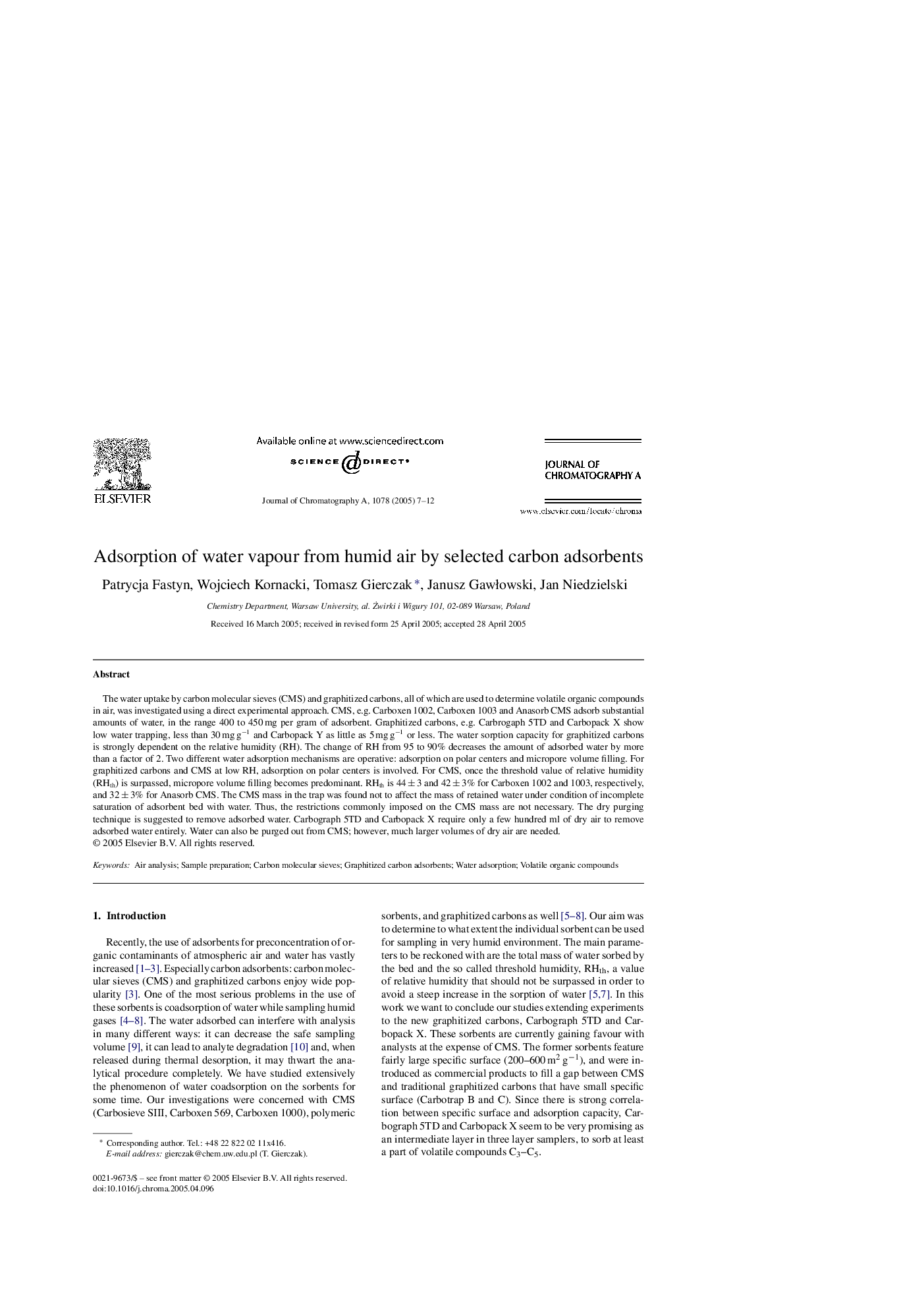| Article ID | Journal | Published Year | Pages | File Type |
|---|---|---|---|---|
| 9748986 | Journal of Chromatography A | 2005 | 6 Pages |
Abstract
The water uptake by carbon molecular sieves (CMS) and graphitized carbons, all of which are used to determine volatile organic compounds in air, was investigated using a direct experimental approach. CMS, e.g. Carboxen 1002, Carboxen 1003 and Anasorb CMS adsorb substantial amounts of water, in the range 400 to 450 mg per gram of adsorbent. Graphitized carbons, e.g. Carbrogaph 5TD and Carbopack X show low water trapping, less than 30 mg gâ1 and Carbopack Y as little as 5 mg gâ1 or less. The water sorption capacity for graphitized carbons is strongly dependent on the relative humidity (RH). The change of RH from 95 to 90% decreases the amount of adsorbed water by more than a factor of 2. Two different water adsorption mechanisms are operative: adsorption on polar centers and micropore volume filling. For graphitized carbons and CMS at low RH, adsorption on polar centers is involved. For CMS, once the threshold value of relative humidity (RHth) is surpassed, micropore volume filling becomes predominant. RHth is 44 ± 3 and 42 ± 3% for Carboxen 1002 and 1003, respectively, and 32 ± 3% for Anasorb CMS. The CMS mass in the trap was found not to affect the mass of retained water under condition of incomplete saturation of adsorbent bed with water. Thus, the restrictions commonly imposed on the CMS mass are not necessary. The dry purging technique is suggested to remove adsorbed water. Carbograph 5TD and Carbopack X require only a few hundred ml of dry air to remove adsorbed water entirely. Water can also be purged out from CMS; however, much larger volumes of dry air are needed.
Keywords
Related Topics
Physical Sciences and Engineering
Chemistry
Analytical Chemistry
Authors
Patrycja Fastyn, Wojciech Kornacki, Tomasz Gierczak, Janusz GawÅowski, Jan Niedzielski,
